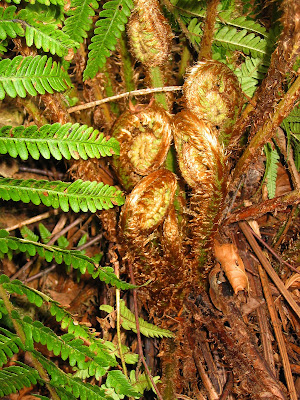

Sorry about the title - I couldn't resist!
The commonest 'wild plum' in flower at the moment is Blackthorn (
Prunus spinosa). It's gorgeous white blossoms seem to be everywhere. But there are others which are easy to confuse with it.
One species which I've only just discovered (by that I mean, discovered for myself - it's long been known to other botanists, of course!) is Cherry Plum (
Prunus cerasifera). The time and place where I first became aware of it was last autumn at a spot in Stretford in the shadow of the bridge which carries the A56 (Chester Road) over Kickety Brook. At this place there's a little group of black barked trees clustered around an old willow. I suppose, if I'd noticed them at all, I'd probably thought that they were some variety of Blackthorn. But last autumn I noticed that they were bearing little red and yellow plums. Most of these were too high to reach but I was able to gather a few wind-falls which, in spite of their size, were quite sweet and juicy. I waited, a bit impatiently (it has to be said) for the trees to flower - which they did at around the end of March/beginning of April (they tend to flower at least a couple of weeks before Blackthorn). The flowers do look a bit like Blackthorn flowers but are quite a bit larger. Another characteristic of this tree is that the young twigs are green. The tree itself is larger and less thorny than Blackthorn. According to my books
P. cerasifera, in the UK, is almost always planted - so who planted my little grove in Stretford, I wonder?
One evening, a couple of days ago, I had a little wander over Hardy Farm with my Field Guide, notebook and camera. In the middle of the SBI was a smallish tree (about 8 to 10 ft high, I would think) absolutely smothered in white blossom (a really breathtaking sight!). I soon realised that this wasn't Blackthorn either. It was, in fact, 'true' Wild Plum (
Prunus domestica) although I do need to see the fruits next autumn to be absolutely sure. It's highly likely that this has self-seeded itself in this spot. Many Wild Plums are derived from domesticated fruit trees. They could be derived from Plums, Greengages, Bullaces etc. but are usually so complexly hybridised and back-crossed that even the experts have great difficulty in sorting them out.
I've posted pictures of both of these finds above.
Posted by Dave Bishop, April 2010





